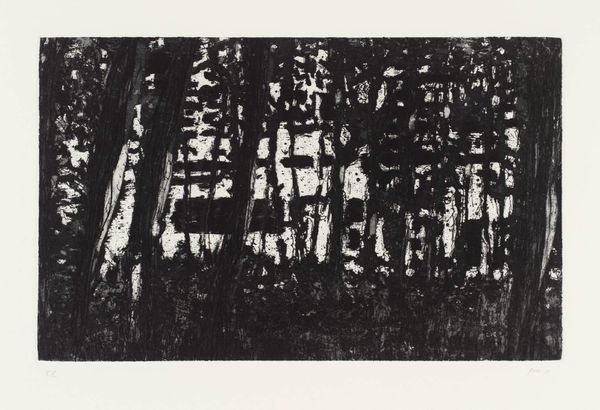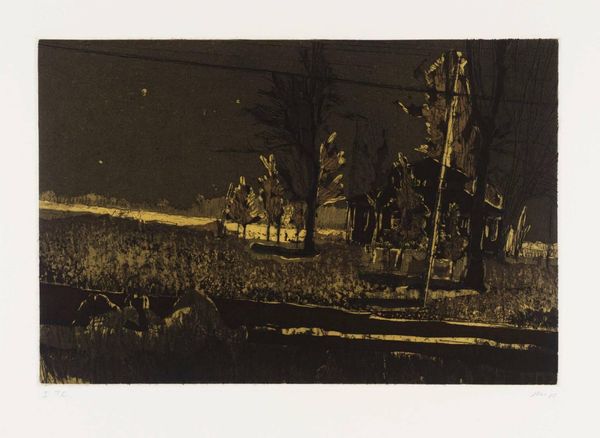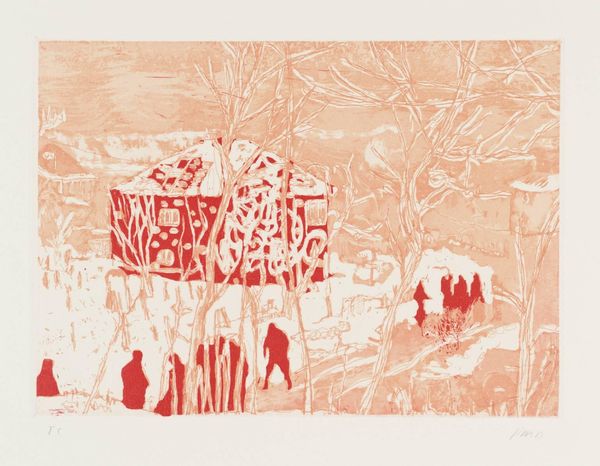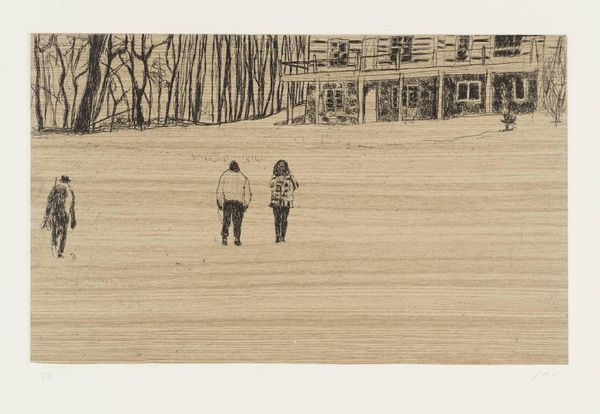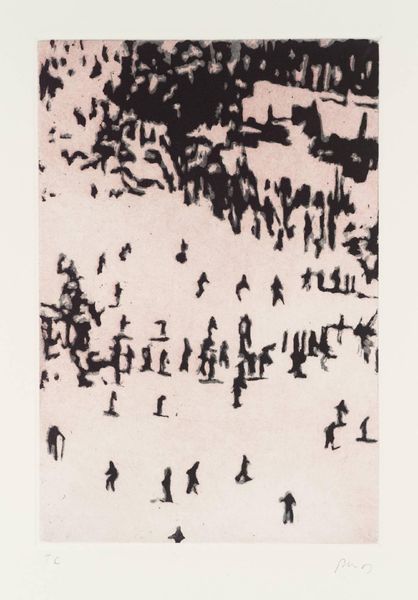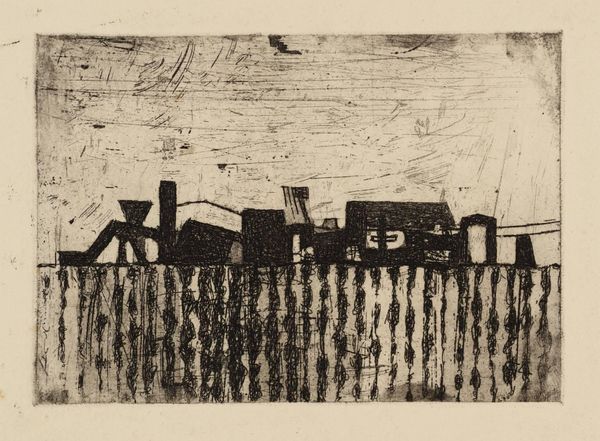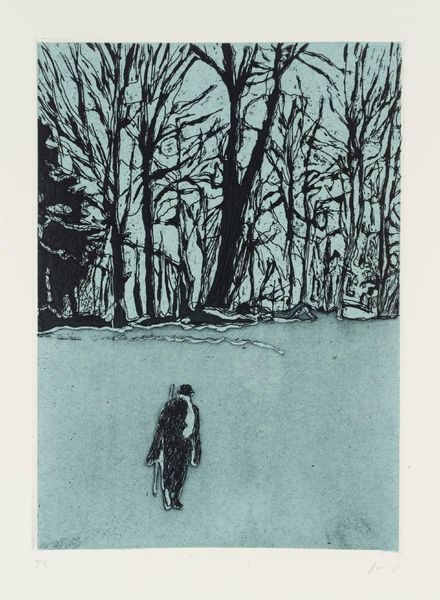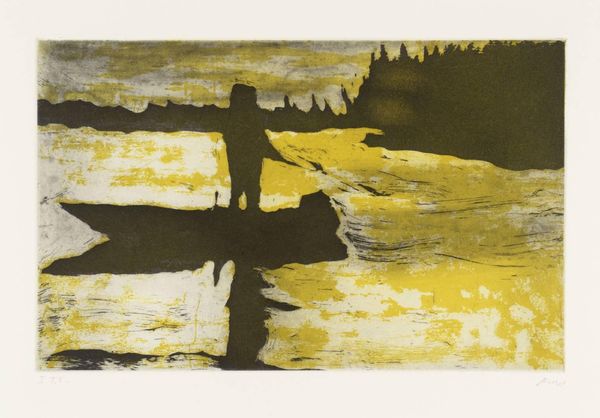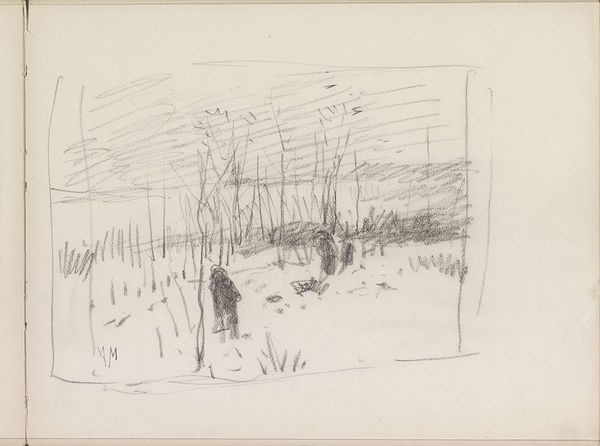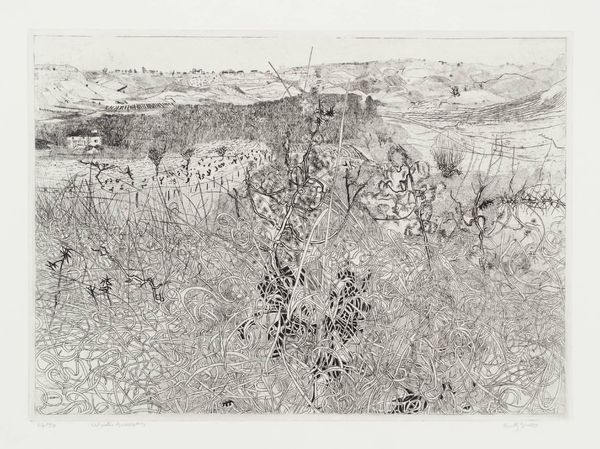
Dimensions: image: 173 x 277 mm
Copyright: © Peter Doig | CC-BY-NC-ND 4.0 DEED, Photo: Tate
Curator: Today, we're looking at 'From Pond Life' by Peter Doig, an etching from the Tate Collections. It's a small work, just under 20 by 30 centimeters. Editor: It has a stark, ghostly quality. The figures look almost like apparitions in a snowy landscape. Curator: Doig’s work often explores themes of memory and the construction of place. His imagery, like here, invites reflection on how we perceive environments filtered through personal and cultural lenses. Editor: The etching technique creates a fascinating texture. You can really see the labor involved in making the marks, the intentionality in the gradations of tone, which adds to the mysterious mood. Curator: I agree. Doig’s images resonate precisely because they are both familiar and unsettling, questioning the role of imagery in shaping communal experiences. Editor: Considering the labor that goes into this, it makes you think about the value we assign to this type of work. Ultimately, it's about how we materialize our social imaginaries, isn't it? Curator: Absolutely. His pieces encourage us to reconsider the narratives around place. Editor: The dialogue between the craft and the social commentary is compelling.
Comments
Join the conversation
Join millions of artists and users on Artera today and experience the ultimate creative platform.
tate 8 months ago
⋮
Ten Etchings is Doig’s first print portfolio. As the title indicates, it is a suite of ten etchings. The portfolio was produced in an edition of thirty-five. Tate’s copy is one of six additional proof sets. Each print is individually signed and numbered ‘TC’ (Tate copy) by the artist. The portfolio is presented in a red artist’s solander box with title and colophon pages designed by Peter B. Willberg. It was printed at Hope Sufferance Press, London on 350gsm Zerkall paper and published by Charles Booth-Clibborn under his imprint, The Paragon Press.
